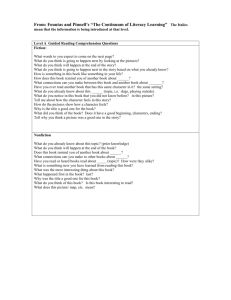Reading SOL Study Guide 13-14
advertisement
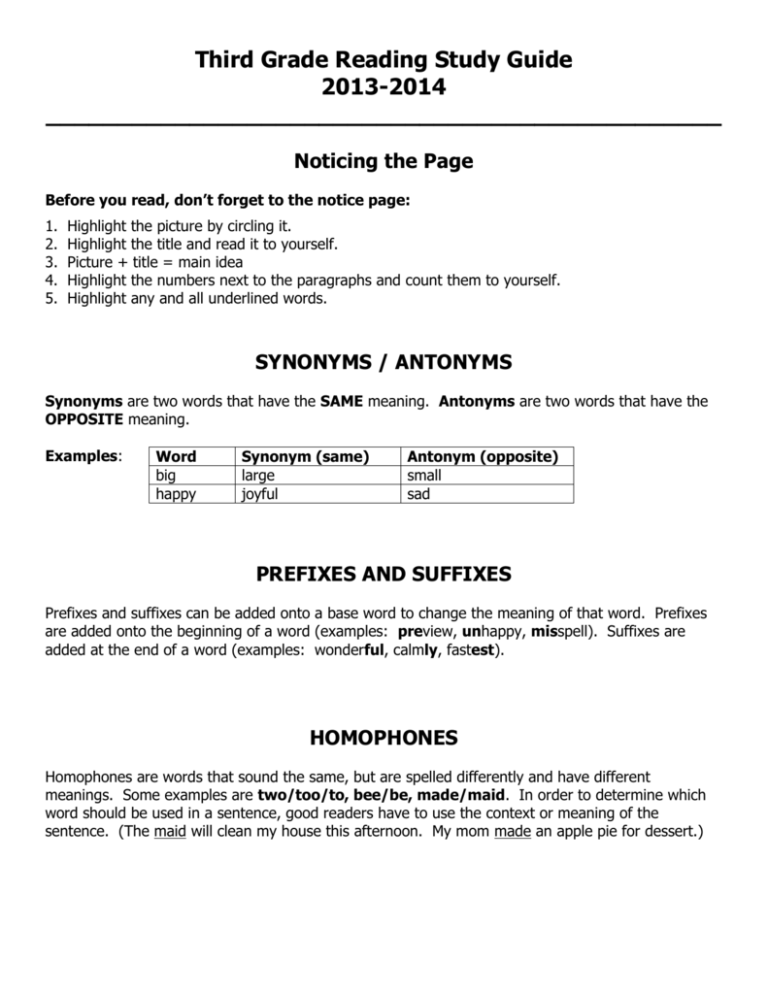
Third Grade Reading Study Guide 2013-2014 _______________________________________________ Noticing the Page Before you read, don’t forget to the notice page: 1. 2. 3. 4. 5. Highlight the picture by circling it. Highlight the title and read it to yourself. Picture + title = main idea Highlight the numbers next to the paragraphs and count them to yourself. Highlight any and all underlined words. SYNONYMS / ANTONYMS Synonyms are two words that have the SAME meaning. Antonyms are two words that have the OPPOSITE meaning. Examples: Word big happy Synonym (same) large joyful Antonym (opposite) small sad PREFIXES AND SUFFIXES Prefixes and suffixes can be added onto a base word to change the meaning of that word. Prefixes are added onto the beginning of a word (examples: preview, unhappy, misspell). Suffixes are added at the end of a word (examples: wonderful, calmly, fastest). HOMOPHONES Homophones are words that sound the same, but are spelled differently and have different meanings. Some examples are two/too/to, bee/be, made/maid. In order to determine which word should be used in a sentence, good readers have to use the context or meaning of the sentence. (The maid will clean my house this afternoon. My mom made an apple pie for dessert.) REFERENCE MATERIALS Reference Material – a book or source that gives you information. Dictionary - A dictionary is a reference book that is set-up in ABC order to help you locate words. It gives the meaning of words, tells how many syllables are in the word, tells how to pronounce words, gives the part of speech (noun, verb, adjective, etc.), and sometimes gives a sentence showing how to use the word. You can use the guide words at the top to help you locate a word on the page. Remember that some words can have multiple meanings. In order to figure out which definition matches a word in a text, we have to use the CONTEXT CLUES given to us in the text. Definition: Some words have more than one meaning. In order to figure out which definition matches a word in a text, we have to use the CONTEXT CLUES given to us in the text. Guide Words: Tell us the first and last word on the dictionary page. These words can help us find the word we are looking up in ABC order more quickly. Syllables: You should be able to count the number of syllables in a given word and divide the word correctly into syllables. Thesaurus – a reference book that contains lists of synonyms (words that have the same meaning). Words are set-up in ABC order and also use guide words to help locate the word. This source is a great tool for writers so that they don’t use the same word over and over in their writing. Again, remember that when choosing a synonym, we have to think about how the word is being used in the text. Encyclopedia – a reference book or sets of books that give information on a wide variety of subjects. It’s used when you want to learn more information on a subject. It is arranged in ABC order on that subject. When looking up a person, you would use the last name. Atlas - a reference book of maps. This can include land, cities, countries, continents, and world maps. They can show streets, landmarks, and important building. Online Reference Materials PREVIEWING TEXT USING TEXT FEATURES Text features are parts of books that help us find information in that book. Text features help us to preview the text and make predictions BEFORE we read. Table of Contents – found at the beginning of the book. It is arranged by the order of material found in the books and it gives page numbers to find the topic. Index – found at the end of a book. It is arranged by ABC order and it gives page numbers to find a topic. Titles/Headings – Titles/headings are one of the first things we use to help us determine the main idea of a text. Headings can be used to break a book into topics. Boldface Print – words or phrases that are in bold lettering to stand out and show importance. Pictures/Charts/Diagrams AUTHOR’S PURPOSE Authors can have many reasons for writing a text. Thinking about the main idea of a text will help you to figure out why the author wrote it. You can also ask yourself this important question when thinking about the purpose of a text: “What is the author trying to tell me?” Here are some of the reasons authors write: teach us something / give us information (most nonfiction texts) entertain us (think about fiction stories that make us laugh, smile, feel scared, etc.) persuade us to do something or think a certain way (think about flyers, advertisements, etc.) teach us a lesson about something we should/shouldn’t do explain how to do something (recipes, directions, etc.) FICTION A K E FICTION Fiction – stories not based on facts. These stories are made up or FAKE. One example of a fiction story is a folktale. Describing and Comparing Characters, Setting, and Events Most fiction stories include the characteristics listed below. As good readers, we should be able to describe and draw conclusions about the following: Characters – who the story is about Setting – where and when the story is taking place Problem Solution – how the problem is solved Plot – the events that happen in the story NONFICTION R U E NONFICTION Nonfiction – stories based on facts. These texts give information or tell about something that is TRUE. Two examples of nonfiction include biography and autobiography. Biography BOTH story of a real person written by SOMEONE ELSE usually has words like he, him, she, her, etc. nonfiction texts tell the story of a REAL person’s life usually written in order of life events Autobiography person writes the story of their OWN life usually has words like I, me, my DRAWING CONCLUSIONS Remember that when we draw a CONCLUSION (or conclude something), we are telling an idea that we were able to think of based on the clues the author gave us and what we know in our heads. We are looking for something the author didn’t tell us directly in the text, but gave us clues about. You need two tools to draw a conclusion: Your smart brain and the details in the text MAIN IDEA / SUPPORTING DETAILS / SUMMARY The MAIN IDEA of a text is the most important idea or what the whole text is about. The main idea is always supported with DETAILS that describe that main idea. Think of the main idea and details like a kitchen table: the main idea is the top of the table and details support it! Detail Detail Detail Detail Main Idea We can use main idea and details to write a SUMMARY of what we have read. A summary is a short version of a whole text that includes the main idea and most important details. SUMMARY WHOLE TEXT MAKING PREDICTIONS A prediction is when we make a good guess about what is going to happen next in a text. Good readers are always making predictions before, during, and after reading. When we make a prediction we need to use two things: the information give to us in the text and information that we know that makes sense in our heads. A good reader usually has support from the text when making a good prediction. Good readers also are constantly checking their predictions to see if they were correct (confirming a prediction) and changing their predictions as they learn new information (revising a prediction). what we know + information from the text = a good prediction! ORGANIZING INFORMATION AND EVENTS Authors organize texts in many ways. Here are some ways that authors can organize what they write: In order of events (beginning, middle, end) In order of life events (biographies and autobiographies) Organized by topic or main idea We can organize information that we read in a text in many ways, like cause-effect relationship, comparing/contrasting, and by sequence. Same Compare / Contrast When we compare and contrast, we tell how things are alike or different. CAUSE (WHEN) It snowed 4 inches of snow last night. Cause / Effect EFFECT (THEN) School was cancelled today. A cause is what makes something happen. To find the cause, you need to ask yourself, “What happened first?”. An effect is what happens because of something else (the cause). To find the effect, you need to ask yourself, “What happened second?”. Flow Chart Event 1 Event 2 Sequence We can organize information and events in the order that they happened with flow charts and timelines. Event 3 Timelines Event 4 1490 1500 1510 1520 1530
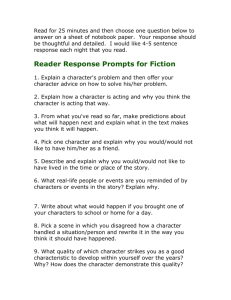


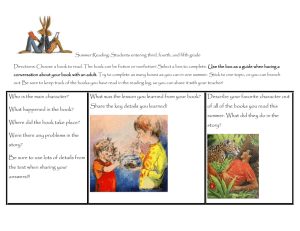
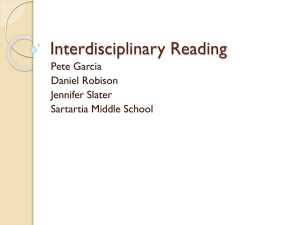
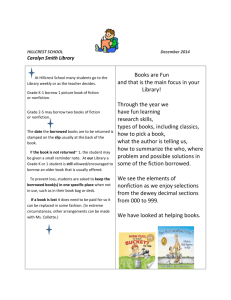

![Grade_5_News_December[1] - bevis](http://s3.studylib.net/store/data/007073999_1-8fc2fd35cb1e3a6b9a315893df035084-300x300.png)
